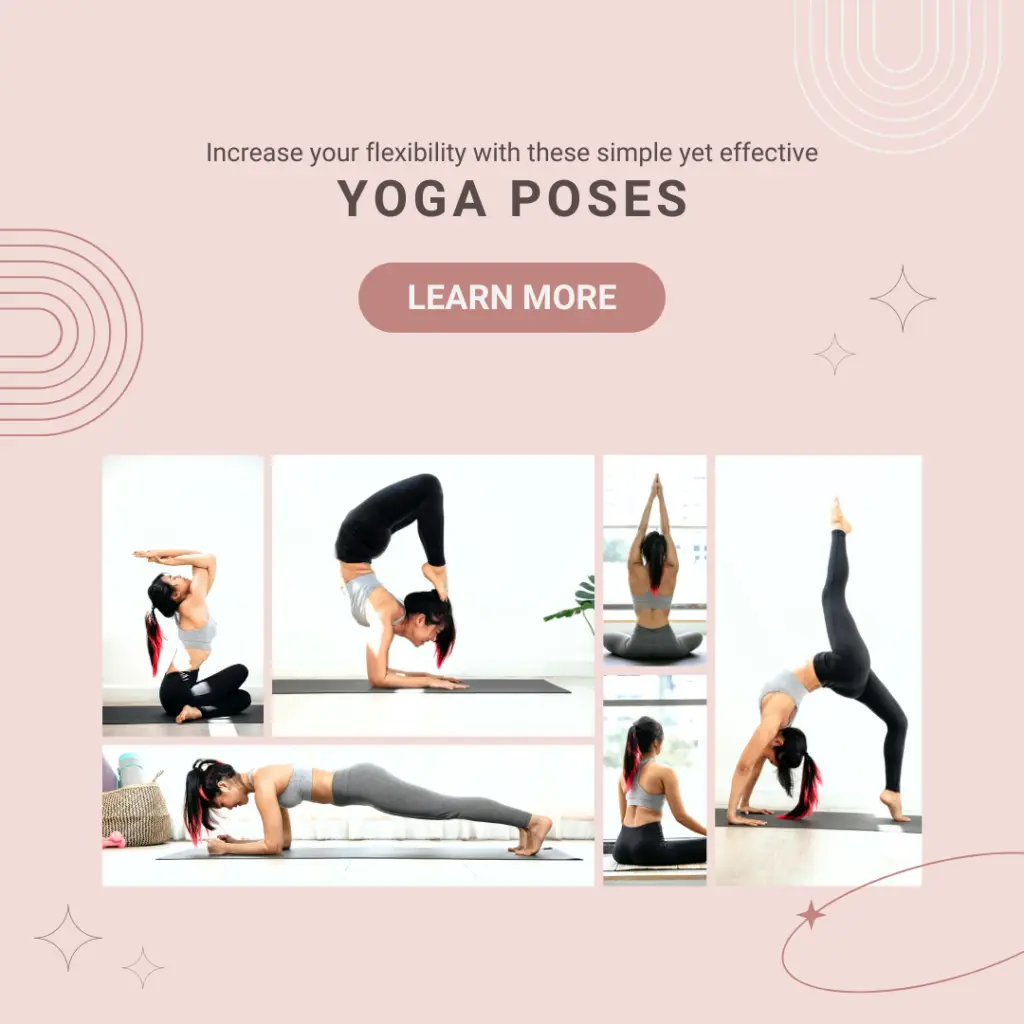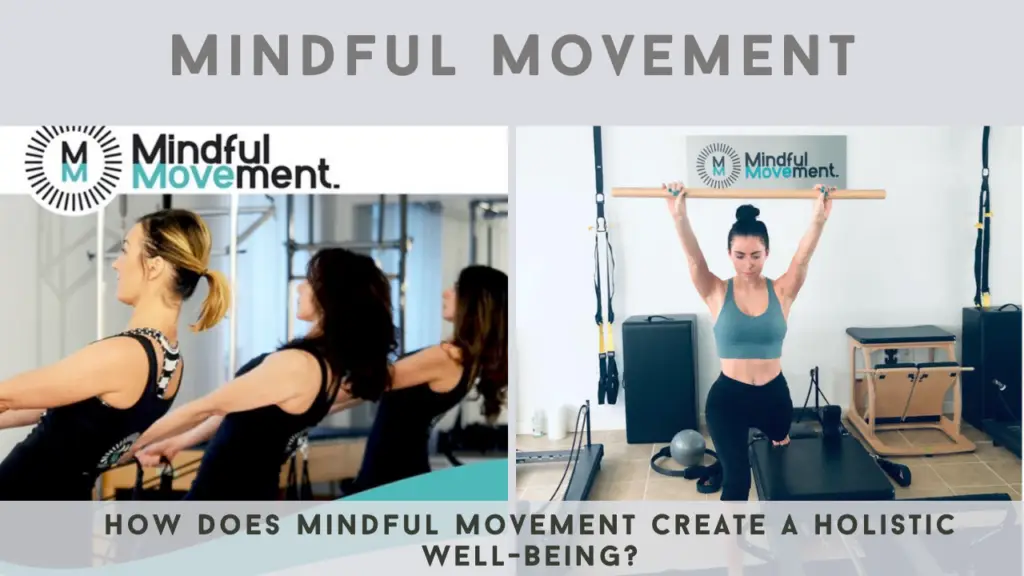Yoga combined with Mindful Movement is such an incredible approach toward holistic well-being. These combined practices duly worked into the issues of physical, mental, and emotional health. As an authoritative professional in the area of PT, one feels very much elated about going deeper into the explored benefits of incorporating yoga and mindfulness into daily living.
In this all-comprehensive volume, we delve to the deepest into the principles of both yoga and mindfulness, their benefits individually, and how their meeting-forward force can concur to create a synergy force in holistic well-being. The time for training has come—the journey to enlightenment!
Know Yoga: Pathway To Body-Mind Harmony
1. What is Yoga?
This is an ancient practice that originated in India over 5,000 years ago and includes physical postures, breath control, and meditation, along with ethical principles that draw out the harmony between mind, body, and spirit.
Eight Limbs
- Yama: Ethical principles, moral conduct
- Niyama: Self-control, spiritual observances
- Asana: Physical postures that bring the development of strength, flexibility, and balance
- Pranayama: Control over breathing to enhance the quality of energy and relaxation
- Pratyahara: Withdrawal from the Senses: Help attain internal focus.
- Dharana: Concentration, training your mind to concentrate on one point with complete attention
- Dhyana: Meditation attention, sustaining your awareness while conscious
- Samadhi: Absorbed or realization of self
Advantages of Yoga and Mindful Movement
Physical: Advantages of Mindful Movement
- Flexibility: Various groups of muscles that are stretched and lengthened through the regular serum of yoga postures.
- Strengthened: This practice builds strength in various muscle groups as above, thus working on the balancing and toning of the physique effectively.
- Better Alignment: A lot of emphasis is laid on proper body alignment and awareness, which ultimately leads to better posturing.
- Balance: This would increase balance and coordination.
- Pain Relief: It provides relief or eliminates problems arising from chronic backache and arthritis.
Mental and Emotional Benefits
- Stress Relief: Through the process of breathing control and meditation, yoga relaxes the body and releases all stress.
- Better Concentration: Concentration and mindfulness on the various yoga asanas bring mental clarity to a person’s mind and help in focusing.
- Emotional Balance: It stabilizes the plethora of different emotions in a person and gives him the feeling of being calm.
- Sleep Improvement: Higher stress reduction and enhancement of quality sleep help reduce certain problems like insomnia.
- Improved Mood: Yoga will trigger endorphins, so one will feel fantastic and high in spirits.
Understanding Mindful Movement: Cultivating Present-Moment Awareness

What Is a Mindful Movement?
Mindfulness is a practice built on the foundation of undistracted attention to the moment, to now, with a non-judgmental attitude about the moment and everything present in that moment. It is an awareness of your thoughts, feelings, bodily sensations, and environment.
Principles of Mindful Movement
- Non-judging: This means not categorizing experiences as positive or negative. Patience: This allows experiences to manifest on their agenda. Beginner’s Mind: In each moment, be open and receptive as a beginner. Trust: Trust your own experience and intuition.
- Non-striving: Feeling there is nowhere to go, nothing to do, or nothing to achieve, but wherever one is, that’s where one should be. Acceptance: Whatever it is, however it is, it is all right just the way it is.
- Letting Go: Release thoughts, feelings, and experiences only as they arise.
Benefits of Mindful Movement
Mental Benefits of Mindful Movement
- Less Stressed: The level of cortisol is reduced through practices of mindfulness, hence less stressed and anxious.
- Better Focus: It enhances attention due to mindfulness meditation.
- Emotional Regulation: Through mindfulness, a process is provided to manage emotions, thereby bringing an element of non-reactivity.
- Improved Cognitive Function: Mindfulness practice increases memory and improves cognitive flexibility.
- Enhanced Self-Awareness: With mindfulness, there is improved clarity of one’s self along with personal experiences.
Physical Benefits of Mindful Movement
- Reduces Blood Pressure: lower blood pressure and risks of heart diseases.
- Enhances Immune Function: repairs the way the immune system functions.
- Pain Management: Experienced pain gets reduced, although abilities associated with pain management get enhanced.
- Improvement in Sleep: Works well in getting proper and sound sleep as it relaxes the body and mind.
- Reduced Inflammation: Mindfulness practices may reduce the formation of inflammatory cytokines in the body.
The Interplay of Yoga and Mindfulness: A Pathway to Complete Health

Facilitating Physiological Health with Mindful Movement
The practice of yoga together with mindfulness in one setting creates a holistic perspective to physical health. Through physical postures, a person acquires strength, flexibility, and balance, whereas, with mindfulness, one becomes acquainted with body structures and adopts relaxation in his or her feature functions; jointly, they create a balance of physical activity and the passivity of the mind.
Flexibility and Strength with Mindful Movement
- Yoga Postures: The asanas with regular practice lengthen and tone up the muscles.
- Mindful Movement: Mindfulness leads to the recognition of body sensations that amplify the consequences of postures of yoga
Better Posture and Alignment
- Yoga Alignment: Yoga results in proper levels of posture alignment in all postures, and the result is easily translated into better posture in general.
- Mindful Awareness: Mindfulness makes one aware of the posture and alignment while carrying out daily activities.
Balance and Coordination Improved
- Balance Postures: The balance posture that is seen in yoga gives one better balance as well as stability
- Mindfulness Focus: Focus, concentration, and coordination—a mind-body mechanism in the balance postures.
Mental and Emotion Well-being
Yoga and mindfulness constitute a very powerful mix that can be exploited to support mental and emotional health. The focus that yoga provides with its breathing techniques and movements allows one to bring to the surface the unique intensity of being capable of dealing with the surge of emotions and clarity of mind due to mindfulness of the present moment.
Reduction of Stress by Mindful Movement
- Yoga Breath Control: Pranayama techniques induce relaxation and thereby reduce stress.
- Mindful Presence: Mindfulness practices lower cortisol levels and stress.
Enhanced Emotional Regulation
- Yoga Meditation: Yoga meditation enhances emotive stability.
- Mindful Observation: Mindfulness decreases reactivity by observing emotions without adding judgments.
Improved Mood and General Well-being
- Yoga Endorphins: Yoga boosts the mood of an individual by increasing the endorphins in the body.
- Mindful Acceptance: Mindfulness enhances general well-being through acceptance and thankfulness.
Spiritual Growth by Mindful Movement
From a spiritual point, yoga and mindfulness exercise spiritual strength. The joining of such will then have great spiritual growth and consequently a higher connection with self and the universe.
Inner Calm and Transparency by Mindful Movement
- Yoga Meditation: These meditative yoga practices shall help one find peace and clarity in One’s Self. Mindful Awareness: This practice supports joining and deep presence.
- Self-realization and Enlightenment: The eight limbs of yoga inform you of the way to self-realization.
- Mindful Insight: Mindfulness totes self-awareness and insight as a way towards enlightenment. Connection with the Universe; Yoga
- Philosophy: The yoga philosophy incites toward unity with the universe.
- Mindfulness Presence: This practice teaches one to enjoy the present moment and the world around you. Real Tips on Bringing Yoga and Mindfulness Together numbered 1 ¬ Start Your Yoga Practice with Mindful Breathing Start your practice in a few minutes of mindful breathing. You want to feel each breath and notice how it goes in and out; you feel the rhythm and the flow. This will create a space for a mindful, present yoga practice.
Postural Mindful Movement: Yoga Postures
As you practice yoga postures, pay particular attention to your body and the sensations of the muscles, joint alignment, and flow of breath while holding a position.
Mindful Movement: Asana and In and Out of Asana
Transition in and out of all postures mindfully and SLOWLY. As you make the transition between poses, stay within this body and breathe awareness.
Guided Meditations
Practice guided mindfulness meditations either at the beginning or at the end of your yoga practice. It just aids the further deepening of your mindfulness practice and the benefits acquired from yoga.
Mindful Yoga Routine
Design a yoga routine, including mindfulness practices such as meditation, breath control, and the process of body scanning. This is practiced holistically for the enhanced effectiveness of both yoga as well as mindfulness.
Be Consistent
The benefits of the yoga and mindfulness combination, therefore, are in its practicing daily consistency, even if for only a few minutes each day.
Listen to Your Body by Mindful Movement
“Let your body talk to you” and adjust your practice according to its needs. Mindfulness promotes an attitude without judgment, so do not become judgmental over your body’s needs and limitations.
Gratefulness
Close your yoga practice with gratitude. Notice the gifts your practice gives you and feel an attitude of appreciation for both your body and your essential self.
Real Life Success Stories, Testimonials in Mindful Movement
Anna’s Transformation by Mindful Movement
“The blending of yoga with mindfulness couldn’t be a more suitable combination to fill my life with serenity and balance. I used to suffer from anxiety and issues of over-thinking these practices cleared before me and got me peace and equanimity. Physically, I am fine—super even—this makes me feel connected with myself and, in turn, with the rest of the world.”
Mark’s Way to Welfare with Mindful Movement
” Being an athlete, I was only looking at the physical fitness component of things, but I came to realize that mental and emotional health is just as important. Yoga and mindfulness have helped me find my center. I’m stronger, more flexible, and more balanced than ever before.”
Lisa’s Happy Place by Mindful Movement
“I practiced yoga for physical benefits, but it’s mindfulness that changed my life. My focus and grounding are so much more improved, my stress levels have been cut by about half, and I have become so much more patient and tolerant. I find yoga and mindfulness very important in my everyday life.”
Conclusion
Yoga and mindfulness practices both call for integration and are two paths that lead to holistic well-being. They complement each other seamlessly. One is enriched by the other, and each enriches physical, mental, and emotional well-being. There you have it: the physical postures of yoga, control of breathing, and meditation with present-moment awareness from the mindfulness tradition—all can bring harmony to current life. Embrace the synergy of yoga and mindfulness; being human transformation through the presentation of holistic well-being. Get started today, and see how it can change your mind-body-spirit connection.



